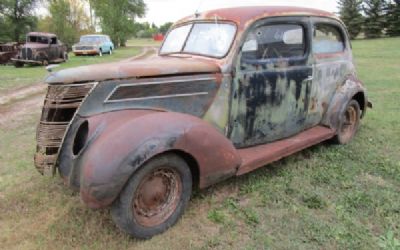The 1937 Ford models had one change, it introduced an entry level 136ci V8 in addition to the 221ci Flathead V8. Ford introduced a more rounded look for 1937. Here are some key details about the 1937 Ford:
Styling: The 1937 Ford models featured updated styling with rounded fenders and a more streamlined appearance compared to earlier designs. The front grille had a distinctive vertical bar design, and the cars had a more integrated look.
Body Styles: Ford offered a variety of body styles for the 1937 models, including two-door and four-door sedans, coupes, convertibles, station wagons, and pickup trucks. This diversity allowed customers to choose the model that best suited their needs.
Engine Options: The 1937 Fords were available with either a six-cylinder or eight-cylinder engine, depending on the model and trim level. The V8 engine was a popular choice for those seeking more power and performance.
Features: Ford continued to introduce modern features and conveniences into its cars. Some models offered amenities such as improved ventilation and interior comfort.
Safety: Ford also emphasized safety features, including improved braking systems and safety glass.
Commercial Vehicles: Ford produced commercial vehicles in addition to passenger cars in 1937, catering to the needs of businesses and industries. These included delivery vans and pickup trucks.
Popular Models: The 1937 Ford Model 78, often referred to as the "Slantback," was a popular choice and known for its sleek styling. The Ford Deluxe, with its upscale features and trim levels, was another well-received model.
The 1937 Ford models, with their updated styling, improved engineering, and a variety of body styles, appealed to a wide range of customers. They represented Ford's commitment to innovation and design during this period.
Today, 1937 Ford cars are appreciated by collectors and enthusiasts for their classic styling and historical significance. Their role in the automotive industry's development during the late 1930s makes them a sought-after part of automotive history.
Read More Here.





